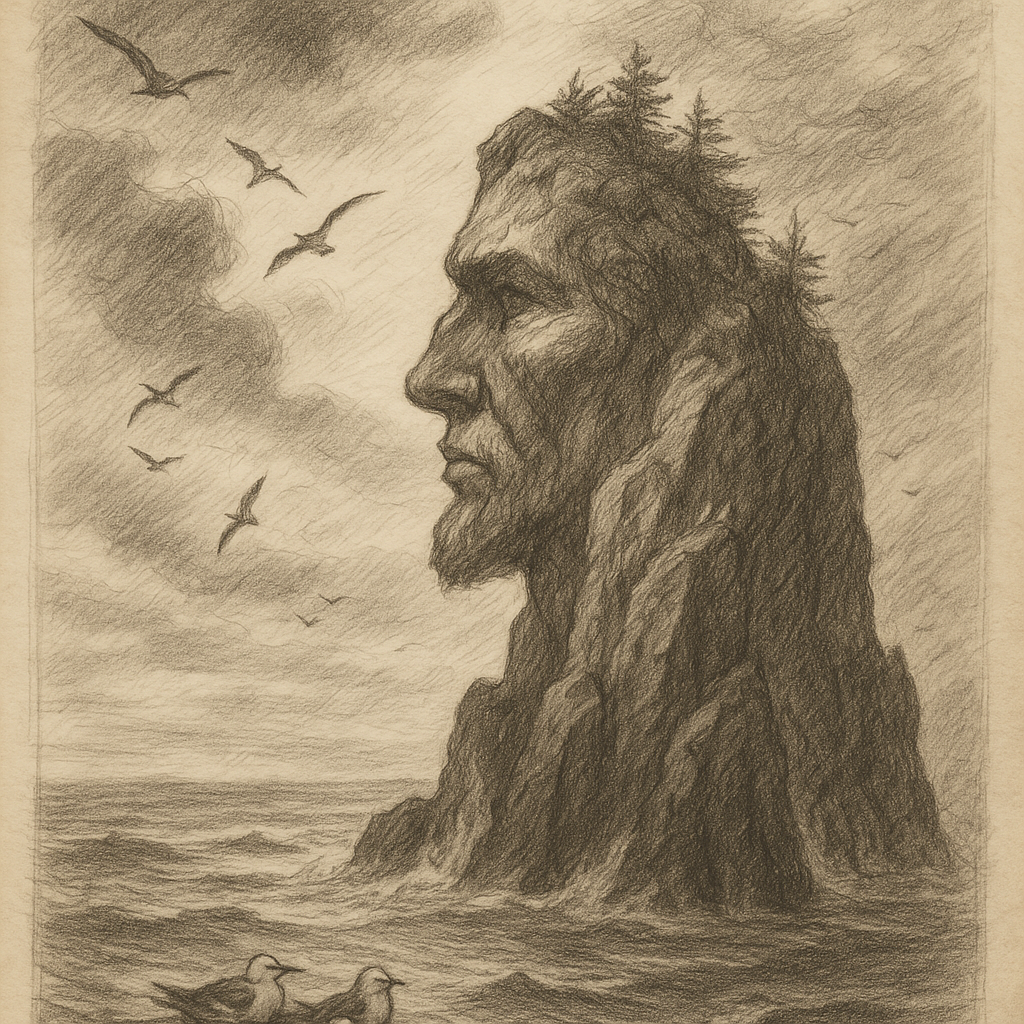Introduction to Thule Island
Thule Island is one of the most remote and enigmatic islands on Earth, located in the icy reaches of the South Atlantic Ocean. It is the southernmost of the South Sandwich Islands, an uninhabited volcanic island chain that belongs to the British Overseas Territory of South Georgia and the South Sandwich Islands. Positioned at approximately 59.5°S latitude and 27.4°W longitude, Thule Island holds a curious place in history, science, and myth.
Thule Island is about 50 kilometers long and shaped like a crescent, partially encircling a flooded volcanic caldera known as Ferguson Bay. With its harsh climate, volcanic activity, and isolation, Thule Island remains a place few people have ever seen, reserved mostly for scientific expeditions and the most daring explorers.
Geological Features
Thule Island belongs to the South Sandwich volcanic island arc, formed by the subduction of the South American Plate beneath the Scotia Plate. This geological activity has created a string of volcanic islands above one of the most active subduction zones in the Atlantic Ocean.
The island itself is a composite of snow-capped peaks and active volcanic features. At its highest, Thule Island reaches around 1,073 meters above sea level. Like its neighboring islands, it consists primarily of stratovolcanic rock, with most of its structure shaped by repeated eruptions over tens of thousands of years.
Large parts of the island are inaccessible due to steep cliffs, snowfields, and glaciers. Frequent volcanic activity has sculpted the island’s terrain, and ongoing geophysical surveys continue to identify volcanic vents and fumaroles. Ferguson Bay, which lies inside a large caldera on the island’s west side, often emits steam and smoke caused by volcanic gases escaping from beneath the sea.
Climate and Ecosystem
The climate on Thule Island is harsh and polar maritime in character. Temperatures remain close to freezing for most of the year, with heavy snowfall, pervasive fog, strong winds, and freezing rain. The seas around the island are often stormy and iceberg-laden, further restricting access.
Despite the extreme conditions, Thule Island supports a specialized ecosystem. Mosses and lichens cling to rocky patches, surviving year-round in sheltered spots. The surrounding waters are much richer in biodiversity, supporting various species of penguins, such as chinstrap and macaroni penguins, and several seabird species, including petrels and skuas.
The island’s remoteness has also made it a refuge for marine life. Southern elephant seals and Antarctic fur seals regularly haul out on the beaches, and the surrounding waters support an abundance of krill, attracting whales and other large predators.
Human Activity and Presence
Thule Island has never had a permanent human settlement, although Argentina briefly established a military outpost on the island in 1976, naming it Corbeta Uruguay. The presence prompted diplomatic clashes with the United Kingdom and was ultimately dismantled in 1982 during the Falklands Conflict.
Today, Thule Island remains uninhabited but occasionally visited by British scientific missions and Royal Navy patrols. Due to its fragile ecosystem and volatile geological conditions, access to the island is highly restricted and logistically challenging.
Powerful underwater volcanoes make navigation hazardous, while the frigid seas and unpredictable weather often deter more casual exploration. As such, most knowledge about the island comes from satellite imaging and remote scientific instruments.
Interesting Facts
Thule Island hosts several peculiar and fascinating aspects that make it unique:
– Thule Island marks one of the southernmost pieces of land outside of Antarctica, lying closer to the South Pole than almost any other landmass on Earth.
– Although it is part of the British Overseas Territories, it has been the subject of geopolitical tension due to its strategic location in the South Atlantic.
– The volcano on Thule Island, Mount Larsen, is one of the most active in the South Sandwich chain, having erupted multiple times in the 20th century.
– The underwater caldera at Ferguson Bay is a rare and spectacular geological feature, offering scientists insight into submarine volcanic processes.
– Due to the island’s isolation and difficult environment, it acts as a natural laboratory to study changes in climate, biodiversity, and geological processes over time.
Legends and Mysteries
Thule Island also holds a symbolic and almost mythical place in historical lore. The name “Thule” itself is deeply rooted in ancient legend. In classical and medieval literature, “Thule” referred to the edge of the known world—a distant, fog-shrouded land to the far north. Though the island lies in the southern hemisphere, the naming perhaps reflects its extreme remoteness and mysterious ambiance.
Some explorers and writers have romanticized Thule Island as a “lost world,” untouched by mankind and shrouded in Antarctic mists. The island has even been cited in various pseudoscientific theories and speculative fiction as a possible location for secret military bases or ancient lost civilizations, though these claims lack any evidence.
An enduring legend from South American sailors speaks of “ghost volcanoes” that glow in the dark and “sing” with deep rumbling noises that can be heard underwater. While this may be a folkloric exaggeration, such tales mirror the island’s very real geological sounds and glowing fumaroles recorded during active phases.
Stories persist among polar explorers of strange lights and radio anomalies near Thule Island, believed to be caused by geomagnetic anomalies and the island’s icy volcanic emissions—yet they continue to feed the island’s aura of mystery and awe.
Conclusion
Thule Island stands as a monument to Earth’s capacity for raw, untouched wilderness. With its volatile geology, extreme climate, and seclusion, it exemplifies the intersection of science and legend. The island offers scientists a unique venue for understanding polar ecosystems, geological activity, and climate change, while continuing to captivate storytellers and explorers alike.
Despite—or perhaps because of—its isolation, Thule Island remains a symbol of the unexplored frontiers of our planet. It is one of the few places where nature rules completely, unchallenged by human settlement and enhanced by the myths and mysteries that swirl around it.


